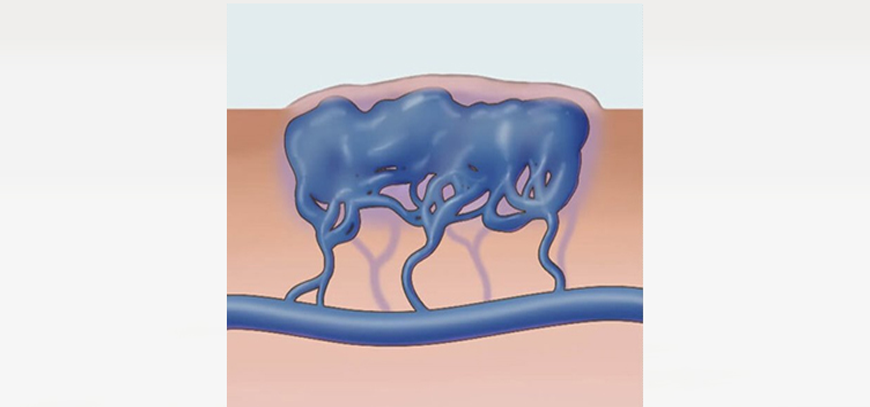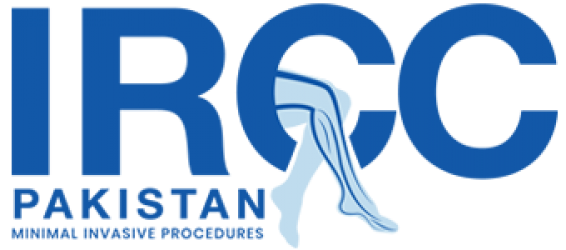Working Time
- Mon-Thu 08:00 – 20:00
Friday 07:00 – 22:00
Saturday 08:00 – 18:00
Contact Info
-
Phone: 92-3324520052
92-3310232883
Ask the Experts
Vascular Malformation Treatment

What is a vascular malformation?
Vascular malformation is a general term that includes congenital vascular anomalies of only veins, only lymph vessels, both veins and lymph vessels, or both arteries and veins.
-
Only veins: venous malformation (VM)
-
Only lymph vessels: lymphatic malformations (LM)
-
Both veins and lymph vessels: venolymphatic malformations (VLM)
-
Arteries connected directly to veins without any capillaries in between: arteriovenous malformation (AVM)
Why do these vascular malformations occur?
These are all present at birth and become apparent at different ages. We are just beginning to understand how malformations occur. The pulmonary arteriovenous malformation, when associated with Hereditary Hemorrhagic Telangiectasia (HHT) is inherited genetically. There is currently much work being done on the possible genetics of other malformations. Most are only known as something that occurs during development of the arteries, veins, and lymph vessels, but without specific cause.
These vascular malformations can cause a variety of symptoms depending on the location in the body:
- Venolymphatic malformation may cause pain wherever they are located. Venous and lymphatic malformations may cause a lump under the skin. There may be an overlying birthmark on the skin. Bleeding or lymph fluid leaking may occur from skin lesions. Lymphatic malformations tend to become infected, requiring repeated antibiotic treatments. Venous and lymphatic malformations may be associated with a syndrome called Klippel-Trenaunay Syndrome.
- Arteriovenous malformations may cause pain. They are also more stressful on the heart because of the rapid shunting of blood from arteries to veins. Depending on their location, they may also result in bleeding (for example from the bowels, from the uterus or from the bladder).
- Hemangioma is another common term used for vascular anomalies. However, this name actually applies to a childhood vascular anomaly that has a rapid growth phase between birth and 3 months of age. These will resolve completely by age 7.Haemangioma most commonly appears on the face, scalp, chest or back. Treatment of a hemangioma is usually unnecessary unless the nodule interferes with vision or breathing, or in rare cases of internal hemangiomas causes or contributes to other medical problems. There are other types of haemangiomas which rapidly resolute (RICH) and other non involute (NICH).
Blood vessel abnormalities may accompany a variety of genetic or inherited syndromes. Patients that present with vascular malformations will receive multidisciplinary care to ensure coordinated treatment for all of their symptoms. A wide variety of combinations and syndromes commonly associated with vascular malformations are treated by Interventional Radiology, with additional collaboration from other multidisciplinary teams.These include:
-
Venolymphatic malformations, including angiokeratomas
-
Klippel-Trenaunay syndrome (capillary, venolymphatic malformations)
-
Parkes Weber syndrome (capillary, arteriovenous)
-
CLOVES (congenital lipomatous overgrowth, vascular malformations, epidermal nevus, spinal abnormalities)
-
Proteus syndrome
-
Hereditary hemorrhagic telangiectasia (Osler-Weber-Rendu syndrome)
-
Blue rubber bleb nevus syndrome (BRBNS)
How do I find out if I have one of these vascular malformations?
These can often be seen on physical examination. Deeper vascular malformations can be diagnosed on MRI (magnetic resonance imaging).
How are these malformations treated?
Although surgery is sometimes useful, it is usually difficult for surgeons to completely remove vascular malformations, which will return if not removed completely. A nonsurgical method of closing down the blood or lymph flow into the malformation is done by interventional radiologists, who treat patients with image guided procedures. Vascular malformations are treated by embolization. The AVMs and hemangiomas can be closed by advancing a tiny plastic tubing, no larger than a pencil point, into the feeding artery to the malformation. This can be done without incisions or stitches, and with only mild sedation. Medical glue or alcohol or small beads are then floated into the malformation until it is full and no longer has blood flowing through it. For the VMs and LMs are closed by injecting alcohol into the sacs filled (sclerotherapy) with venous blood or lymph until these sacs collapse and no longer fill .
What is the recovery time for the procedure?
The arteriovenous malformations can be treated with a short hospital stay. There is usually minimal discomfort for one to three days. The venous and lymphatic malformations require no hospital stay. These malformations swell after treatment with alcohol, and the swelling and pain may last for three to five days. During this time, we give patients medication for any pain or swelling they may have. The full shrinkage of these malformations may take four to six weeks.
How effective is the treatment?
Arteriovenous malformations are more difficult to treat since they tend to pull in new artery feeders from time to time. However, embolization is very effective in blocking abnormal artery feeders while preserving normal arteries. AVMs may require a series of treatments to block all of the abnormal feeders. Venous and lymphatic malformations respond well to alcohol embolization. These may also require a series of treatments about six weeks apart to block all of the abnormal vessels. All vascular malformations require long term surveillance, so that if there is any change, such as a growth spurt with puberty or pregnancy or menopause, they can be monitored for symptoms that may warrant rechecking and possibly retreating.
What is the best age to have treatment?
We can treat any age from newborn to adult. The best age of treatment depends on the specific vascular malformation and its symptoms, and is best individualized to each person.
If you have been diagnosed with vascular malformation that is causing you painful or uncomfortable symptoms, you may be a candidate for sclerotherapy or embolization. Our interventional radiologist and clinical staff at our outpatient vascular centers combine medical expertise and compassion to guide you through your vascular malformation treatment journey every step of the way, providing symptomatic relief and getting you back to your daily routine quickly.

